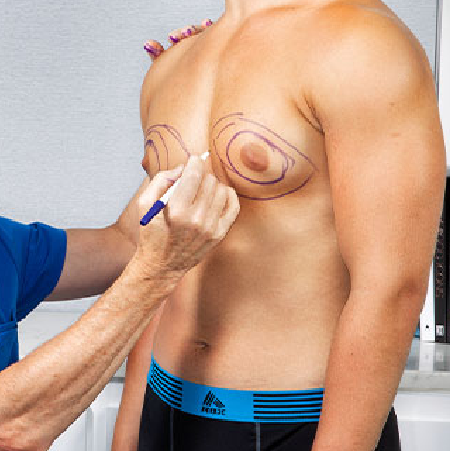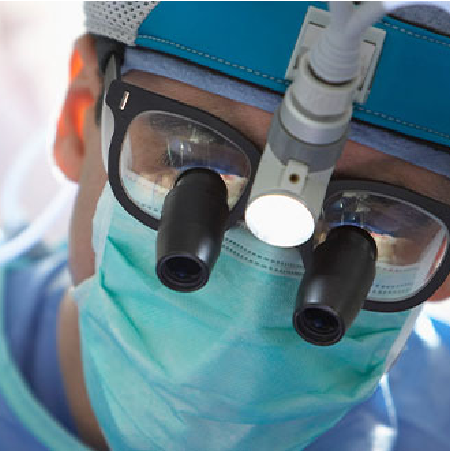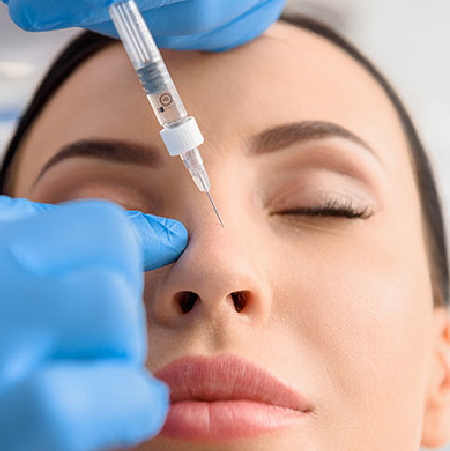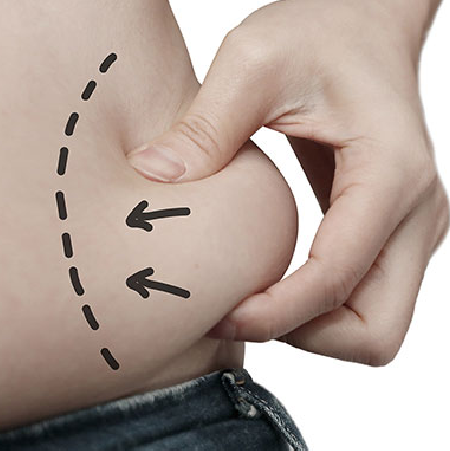Breast implants and cancer

Breast implants are medical devices used to change the size, shape, and appearance of the breasts. They are commonly used to enlarge the breasts or to rebuild them after a mastectomy or other breast surgery :
There are two main kinds of breast implants:
those filled with saline and those filled with silicone gel. Silicone gel implants are filled with a sticky silicone gel, while saline implants are filled with a clean solution of saline. Both have a plastic shell on the outside.
Shapes of Implants
Breast implants come in different shapes, like round and structural teardrops. Round implants are proportionate and fill out the upper part of the breasts. Teardrop implants, on the other hand, have a more natural shape that looks like the slope of real breasts.
Surface Textures: The surface of breast implants can be smooth or rough. Smooth implants have a smooth surface on the outside, while textured implants have a rougher surface that is meant to prevent scar tissue from forming around the implant.
Implant Placement
Breast implants can be placed either subglandularly (behind the breast tissue and above the chest muscle) or submuscularly (partially or fully below the chest muscle). The placement rests on things like the person’s body, the quality of their tissues, and the result they want.
Incisions are usually made in the breast crease (inframammary), around the nipple (periareolar), or in the area under the arm (transaxillary) during breast implant surgery. Which incision and surgical method to use depends on things like the type of implant, the result you want, and the preferences and skills of the surgeon.
Risks and Problems
Like any other treatment, breast implant surgery has risks and could cause problems. Some of these problems are infection, bleeding, changes in how the breast or nipple feels, capsular contracture, implant rupture or leaking, implant malposition, asymmetry, and the need to remove or change the implant in the future.
Long-Term Monitoring
People who have breast implants are told to keep an eye on their breast health and have regular checkups with their doctors. Routine mammograms, breast self-checks, and clinical breast exams are important for breast health and finding any changes or problems with the implants.
It is important to talk to a board-certified plastic surgeon who can give you personalised advice, talk about the possible risks and benefits, and help you figure out which choices are best for you based on your goals and other factors.
Read more: Best Breast Implant Brands in 2023
There has been some talk and study about the possibility that breast implants could cause cancer. Here are some important things to think about:
Anaplastic Large Cell Lymphoma Linked to Breast Implants (BIA-ALCL)
Breast implant-associated anaplastic large cell lymphoma (BIA-ALCL) is a rare type of non-Hodgkin’s lymphoma that can develop in the tissue around breast implants. BIA-ALCL is a type of lymphoma, not breast cancer. This is important to know. BIA-ALCL seems to happen more often when the breast implants are rough than when they are smooth. If BIA-ALCL is caught early, it is generally easy to treat and can be cured. Most of the time, both the implants and the scar tissue that forms around them can be removed.
Risk of Breast Cancer
Research shows that getting breast implants does not make you more likely to get breast cancer. Multiple studies have found that women with breast implants do not have a significantly higher risk of getting breast cancer as a whole. But breast implants can make it harder to find and diagnose breast cancer because they can interfere with mammograms. Before getting a mammogram, women with breast implants should tell their radiologists so that the right imaging methods are used.
Cancer Linked to Breast Implant Surveillance: People with breast implants need to be watched over. Regular self-exams of the breasts and regular checkups with a doctor or nurse are advised. It’s important to pay attention to any changes in the way your breasts look or feel, like swelling, pain, or lumps, and to tell your doctor right away.
Recommendations from the FDA and information about safety
The U.S. Food and Drug Administration (FDA) gives information and advice about breast implants and their safety. The FDA advises individuals considering breast implants to understand the risks and benefits and discuss them with their doctor. They also recommend monitoring breast health, recognizing signs of BIA-ALCL, and seeking regular medical checkups.
It is important to talk to a trained medical professional, like a plastic surgeon or oncologist, about your situation, worries, and any possible risks that may be linked to breast implants and cancer. Based on a person’s medical history and current situation, healthcare professionals can give them personalised help.
Know the Long-Term Risks of Breast Implants
As with any medical gadget, there are some risks associated with breast implants. It’s important to understand the possible long-term risks of breast implants. Here are some things to think about:
Capsular Contracture
Capsular contracture happens when scar tissue forms around the implant and tightens. This can cause stiffness, pain, and changes in how the breasts look. It can happen to different degrees and may require more surgery to fix.
Implants that break or leak
Over time, breast implants can break or leak. As the body absorbs the saline solution, saline implants generally lose their shape and size. When a silicone gel implant breaks, there may be no pain or other signs, like a change in the shape of the breasts. To find leaks or breaks, it’s best to keep an eye on things and possibly do imaging, like an MRI.
Anaplastic Large Cell Lymphoma Linked to Breast Implants (BIA-ALCL)
BIA-ALCL is a rare type of cancer that is linked to breast implants with a textured surface. There may be growth, pain, lumps, or changes in the shape of the breasts. It’s important to check on your health regularly and let your doctor know about any signs that worry you.
Changes in How the Breast Feels
Breast augmentation surgery can cause temporary or lasting changes in how the breast or nipple feels. Some people may feel more or less sensitive, and others may feel numbness in certain places.
Mammography Problems
Breast implants can make it harder to find breast cancer during a mammogram. For better pictures of breast tissue, you may need to use more imaging methods, like ultrasound or MRI. Before getting a mammogram, it’s important to let your doctor know that you have breast implants.
Breast Implant Removal or Revision
Breast implants may need to be taken out or changed in the future because of problems, changes in personal tastes, or factors linked to getting older. There may be more surgeries and the risks that come with them.
Psychological and Emotional Considerations
It’s important to think about the possible psychological and emotional effects of breast augmentation or reconstruction, as these treatments can affect body image, self-esteem, and satisfaction.
Read more: Breast augmentation in Iran
It is very important to talk to a skilled plastic surgeon about the possible risks and benefits of breast implants based on your situation. Long-term care for breast implants requires regular follow-up appointments, close monitoring, and open conversation with health care providers.
Which breast implants are linked to cancer?
Breast implant-associated anaplastic large cell lymphoma (BIA-ALCL) has been linked to rough breast implants instead of smooth ones. A rare type of cancer called BIA-ALCL can grow in the scar tissue and fluid around the implant. Textured implants have a rough surface designed to reduce the risk of capsular contracture. However, studies have linked them to a higher risk of BIA-ALCL compared to smooth implants.
It’s important to know that BIA-ALCL is a very rare disease with a low general risk of happening. Researchers are still working to understand the causes of BIA-ALCL, which seem to involve a combination of genetic, environmental, and immune system factors. Regardless of the type of breast implant, individuals should stay alert for any signs or symptoms of BIA-ALCL. If any changes occur, they should promptly inform their doctor.
Consulting a trained medical professional, such as a plastic surgeon, about the risks and benefits of various breast implants is crucial. They provide personalized advice tailored to each individual’s situation, helping them make an informed choice about the best implant type.
Breast cancer treatment with implants
There are different ways to treat breast cancer with implants, depending on the person’s situation and personal preferences. Here are some popular ways to treat breast cancer for women who have breast implants or want them:
Lumpectomy with Implant Reconstruction
This method lets the breasts stay the same size while giving the body a healthy look.
Mastectomy with Implant repair
When a mastectomy (removal of the entire breast) is necessary, doctors can perform reconstruction with implants either simultaneously or in stages. They can place the implant beneath the chest muscle (submuscular) or above it (subglandular) to reshape the breast.The choice of implant placement depends on factors such as the remaining breast tissue, the need for radiation therapy, and the patient’s preferences.
Autologous Tissue Reconstruction with an Implant
For some people, it may be best to use their tissue (called “autologous tissue”) to rebuild the breast. In these situations, a deep inferior epigastric perforator (DIEP) flap or a latissimus flap can be used to move tissue from another part of the body to the chest. You can get the shape and size of your breasts you want by using your tissue and an implant together.
Implant Removal
Some people with breast implants may decide to have them taken out as part of their treatment for breast cancer. The decision depends on factors like the tumor’s size, location, the need for radiation therapy, and personal preferences. After breast implants are removed, reconstruction options include using autologous tissue or opting for implant-based reconstruction without breast implants.
Consulting a multidisciplinary team, including a breast surgeon and a plastic surgeon experienced in breast reconstruction, is essential for determining the best treatment options. This approach considers the individual’s specific condition, tumor type, and personal preferences. The team provides personalized guidance and support, helping patients make informed decisions about breast cancer treatment and reconstruction with implants.
The FDA warns of a possible new cancer risk linked to breast implants
The FDA has admitted that breast implants can cause a type of cancer called breast implant-associated anaplastic large cell lymphoma (BIA-ALCL). BIA-ALCL is a rare type of non-Hodgkin’s lymphoma that can grow in the scar tissue and fluid around breast implants. The FDA has been keeping an eye on this group and posting new information on its website.
Individuals considering breast implants should be informed about the potential risks and discuss them with their doctor. Regular breast health monitoring is essential, including awareness of BIA-ALCL symptoms. Any changes should be promptly reported to a medical professional. Staying informed and addressing concerns with a qualified doctor are key to making well-informed decisions about breast implants.
Monitor Your Breast Implants
Keeping an eye on your breast implants is an important part of taking care of them over time. Here are some important things to keep an eye on when you have breast implants:
Regular Self-Examinations
Check your breasts every month so you can get used to how they normally look and notice any changes. Check to see if your breasts have changed in form, size, symmetry, and texture, or if there are lumps or swelling. Talk to your healthcare provider if you notice any differences that worry you.
Clinical Breast Exams
Have your healthcare worker give you regular clinical breast exams. During a physical check, they will look at your breasts to see if anything is wrong or has changed.
Routine mammograms
Discuss with your doctor the best approach for a mammogram that considers your breast implants. Inform the facility about your implants in advance so they can use suitable imaging techniques. They may recommend additional views, such as Eklund displacement views or an MRI, to capture clearer images of the breast tissue.
Monitoring for Signs of Problems
Keep an eye out for any signs that breast implants might cause problems. These can include pain in the breasts, changes in the way the breasts look, swelling, redness, or an abnormal buildup of fluid. If you have any signs that worry you, you should talk to your doctor right away.
Follow-up meetings with Your Plastic Surgeon
Set up regular meetings with your plastic surgeon for follow-up care. They can look at the state of your breast implants, notice any changes, answer your questions, and give you advice on how to care for them in the future.
Stay Informed
Stay up-to-date on the latest information about breast implants, such as new studies, information about safety, or changes in the law. Reliable information can be found from sources like the U.S. Food and Drug Administration (FDA) or professional groups that focus on plastic surgery.
Remember that it’s important to talk openly with your doctor. If you have any worries or questions about your breast implants, you should talk to a skilled plastic surgeon or other medical professional who knows how to take care of them.
Signs of breast cancer with implants
Even though breast implants do not make you more likely to get breast cancer, it is still important to keep an eye on your breast health and be aware of any signs or symptoms that could mean you have breast cancer. Here are some warning signs:
Breast Pain or Discomfort:
If you have pain or discomfort in your breasts that you can’t explain and that lasts or gets worse over time, you should see a doctor.
Changes in the skin:
Look for redness, swelling, thickening, dimples, or puckering in the breast skin.
Changes in the Nipples:
Pay attention to any changes in the nipples, such as inversion (when the nipple turns inward), changes in position, or discharge (especially if it is bloody or happens without squeezing).
Lumps or Masses
Do regular self-exams of your breasts to find lumps or masses that are new or different. Remember that most lumps are harmless, but it is important to have any new or worrying findings checked out by a doctor.
It’s important to keep in mind that diseases other than cancer or issues with implants can also cause these signs and symptoms. If you notice any changes or have worries, you should talk to a doctor or nurse. They can look at your symptoms and give you the right advice.
Even if you have breast implants, you should still perform routine clinical breast exams, self-exams, and mammograms following your doctor’s advice to detect breast cancer early. Make sure to tell your healthcare workers that you have implants so that they can adjust the way they check you.












